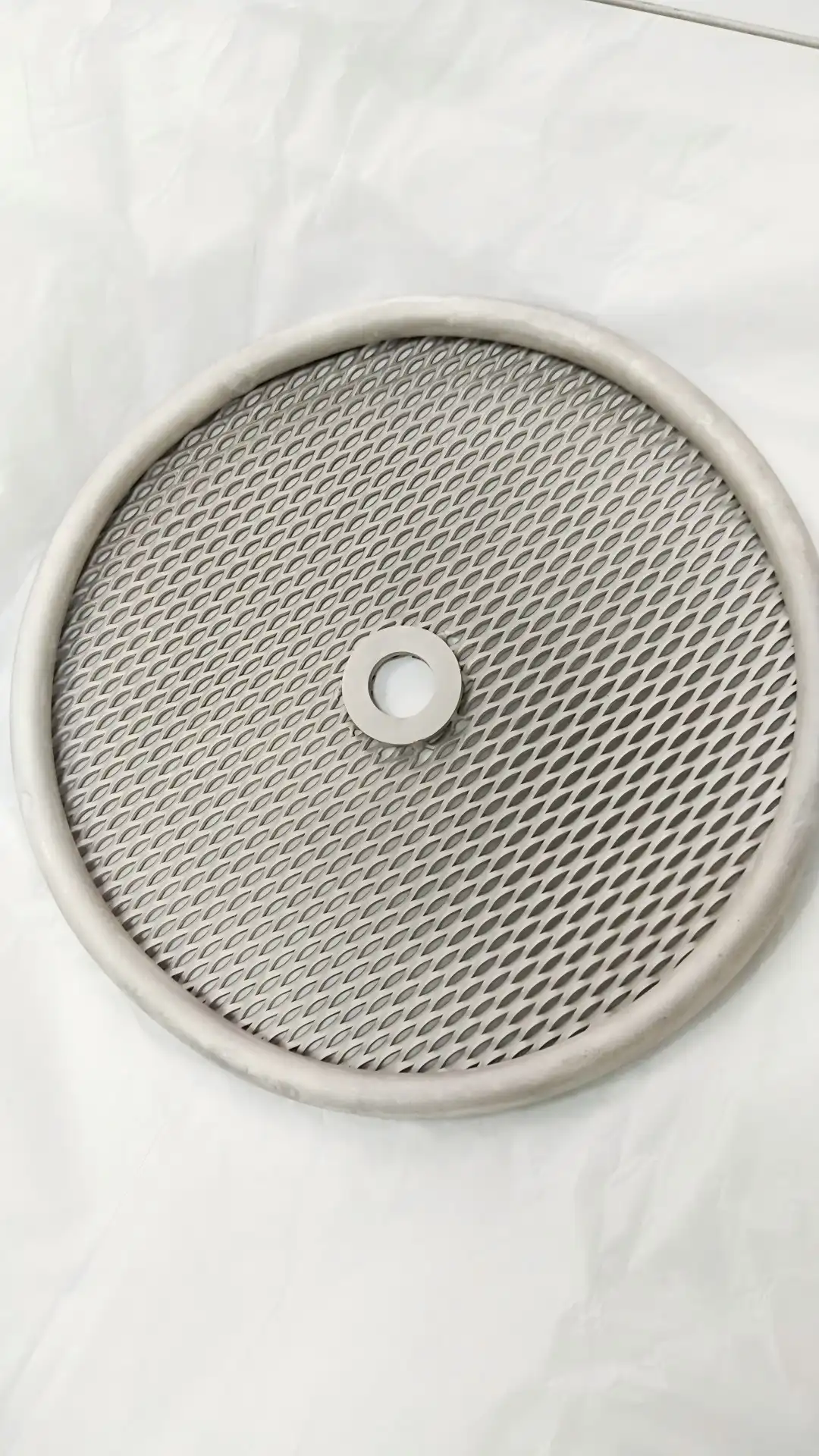The Benefits of Platinum-Coated Titanium Electrodes in Corrosion-Resistant Applications
In the world of electrochemistry and industrial applications, the choice of electrode materials plays a pivotal role in determining the efficiency, durability, and overall performance of various processes. Among the myriad of options available, platinum-coated titanium electrodes have emerged as a formidable solution for corrosion-resistant applications. These electrodes combine the robust nature of titanium with the exceptional catalytic properties of platinum, creating a synergy that addresses many challenges faced in harsh industrial environments.
The Science Behind Platinum-Coated Titanium Electrodes
To truly appreciate the benefits of platinum-coated titanium electrodes, it's essential to understand the science that underpins their exceptional performance. At its core, this technology leverages the strengths of two remarkable materials: titanium and platinum.
Titanium, known for its high strength-to-weight ratio and inherent corrosion resistance, serves as the substrate. Its durability and ability to withstand harsh environments make it an ideal base material. However, titanium alone isn't suitable for many electrochemical applications due to its tendency to form a passive oxide layer, which can impede electron transfer.
This is where platinum comes into play. By coating the titanium substrate with a thin layer of platinum, we create an electrode that combines the structural integrity of titanium with the superior catalytic properties of platinum. The platinum coating provides an active surface for electrochemical reactions while protecting the underlying titanium from corrosion.
The coating process itself is a marvel of modern materials science. Advanced techniques such as electrodeposition, thermal decomposition, or physical vapor deposition are employed to ensure a uniform and adherent platinum layer. The thickness of this layer is carefully controlled, typically ranging from a few micrometers to tens of micrometers, depending on the specific application requirements.

One of the key advantages of platinum-coated titanium electrodes lies in their electrochemical stability. Platinum is renowned for its resistance to chemical attack and its ability to catalyze a wide range of reactions without degrading. This stability translates to longer electrode lifespans and more consistent performance over time, even in aggressive environments.
Moreover, the combination of platinum and titanium addresses a common issue in electrochemistry: the trade-off between conductivity and corrosion resistance. While titanium offers excellent corrosion resistance, its electrical conductivity is relatively low. The platinum coating provides a highly conductive surface, ensuring efficient electron transfer during electrochemical processes.
Applications and Advantages in Corrosion-Resistant Scenarios
The exceptional properties of platinum-coated titanium electrodes make them indispensable in a variety of corrosion-prone applications. Their versatility and durability have led to their adoption across multiple industries, each benefiting from the unique advantages these electrodes offer.
In the realm of water treatment, platinum-coated titanium electrodes have become a cornerstone of advanced oxidation processes. These electrodes are particularly effective in the generation of powerful oxidants such as ozone and hydroxyl radicals, which are crucial for the degradation of recalcitrant organic pollutants. The stability of these electrodes in chloride-rich environments also makes them ideal for electrochlorination systems, providing a sustainable solution for water disinfection.
The chemical processing industry has embraced platinum-coated titanium electrodes for their resilience in aggressive media. In processes involving strong acids, bases, or oxidizing agents, these electrodes maintain their integrity and performance where other materials would rapidly degrade. This durability translates to reduced downtime, lower maintenance costs, and improved process reliability.
In the field of metal finishing and electroplating, platinum-coated titanium electrodes offer unparalleled precision and consistency. Their uniform surface and stable performance ensure even coating distribution, crucial for achieving high-quality finishes. The low overpotential of platinum for many electroplating reactions also contributes to energy efficiency, an increasingly important factor in industrial processes.
The corrosion resistance of these electrodes extends their applicability to marine environments, where conventional materials often succumb to the relentless assault of saltwater. From offshore structures to desalination plants, platinum-coated titanium electrodes provide long-lasting protection and functionality in some of the most challenging conditions nature can present.
In the realm of energy storage and conversion, these electrodes are making significant inroads. Their stability and catalytic activity make them excellent candidates for fuel cells and water electrolysis systems, contributing to the development of clean energy technologies.
One of the most compelling advantages of platinum-coated titanium electrodes in corrosion-resistant applications is their longevity. The extended lifespan of these electrodes not only reduces replacement frequency but also minimizes the environmental impact associated with electrode production and disposal. This aligns well with the growing emphasis on sustainability in industrial practices.
Future Trends and Innovations in Electrode Technology
As we look to the future, the landscape of electrode technology continues to evolve, with platinum-coated titanium electrodes at the forefront of innovation. Researchers and industry experts are exploring new avenues to enhance the already impressive capabilities of these electrodes, paving the way for even more efficient and sustainable electrochemical processes.
One area of active research is the development of nanostructured platinum coatings. By manipulating the surface morphology at the nanoscale, scientists aim to increase the active surface area of the electrodes without increasing their overall size. This approach could lead to significant improvements in catalytic activity and efficiency, potentially reducing the amount of platinum required and thereby lowering costs.
Another promising direction is the exploration of platinum alloys and composite coatings. By combining platinum with other noble metals or incorporating ceramic particles, researchers are creating electrodes with tailored properties for specific applications. These innovations could result in electrodes that offer even greater corrosion resistance, higher catalytic activity, or improved selectivity for particular reactions.
The integration of smart technologies with electrode systems is also on the horizon. Imagine electrodes equipped with sensors that can monitor their own performance and predict maintenance needs. Such advancements could revolutionize industrial processes by enabling predictive maintenance and real-time optimization of electrochemical systems.
As environmental concerns continue to shape industrial practices, there's a growing focus on developing more sustainable electrode technologies. This includes research into recycling and reclaiming platinum from spent electrodes, as well as exploring alternative coating methods that minimize waste and energy consumption during production.
The advent of 3D printing and additive manufacturing technologies is opening up new possibilities in electrode design. These techniques allow for the creation of complex electrode geometries that were previously impossible or impractical to manufacture. Custom-designed electrodes with optimized surface structures could lead to breakthrough improvements in efficiency and performance across various applications.
Conclusion
The benefits of platinum-coated titanium electrodes in corrosion-resistant applications are manifold and far-reaching. From their exceptional durability and stability to their versatility across various industries, these electrodes have proven to be indispensable tools in modern electrochemistry and industrial processes.
For those seeking to leverage the benefits of platinum-coated titanium electrodes or explore custom solutions for their specific applications, expert guidance is invaluable. To learn more about how these advanced electrodes can enhance your processes or to discuss your unique requirements, please contact us at info@di-nol.com. Our team of specialists is ready to help you harness the power of cutting-edge electrode technology for your corrosion-resistant applications.
References
1. Walsh, F. C., & Ponce de León, C. (2018). Versatile electrochemical coatings and surface layers from aqueous methanesulfonic acid. Surface and Coatings Technology, 345, 9-22.
2. Martínez-Huitle, C. A., & Ferro, S. (2006). Electrochemical oxidation of organic pollutants for the wastewater treatment: direct and indirect processes. Chemical Society Reviews, 35(12), 1324-1340.
3. Chen, X., Chen, G., & Yue, P. L. (2001). Stable Ti/IrOx-Sb2O5-SnO2 anode for O2 evolution with high oxygen evolution efficiency. The Journal of Physical Chemistry B, 105(20), 4623-4628.
4. Kraft, A. (2007). Doped diamond: a compact review on a new, versatile electrode material. International Journal of Electrochemical Science, 2(5), 355-385.
5. Trasatti, S. (2000). Electrocatalysis: understanding the success of DSA®. Electrochimica Acta, 45(15-16), 2377-2385.


